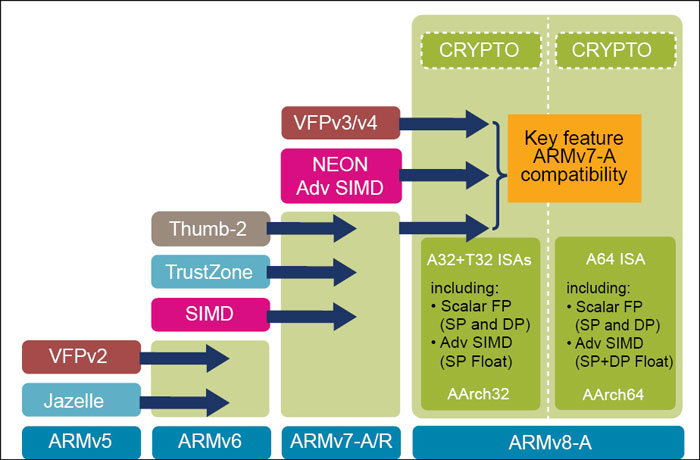ARM is a family of instruction set architectures for computer processors based on a reduced instruction set computing (RISC) architecture developed by British company, ARM Holdings.
A RISC based computer design approach means that ARM processors require significantly fewer transistors than typical complex instruction set computing (CISC) 32-bit processors in most personal computers. This approach reduces cost, heat and power use. These are desirable traits for light, portable, battery-powered devices, including smartphones, laptops, tablets, notepad computers and other embedded systems. A simpler design facilitates more efficient multi-core central processing units (CPUs) and higher core counts at lower cost, providing improved energy efficiency for servers.

ARM Holdings licenses chip designs and ARM instruction set architectures to third parties, who design their own products that implement one of those architectures, including systems on chips (SoCs) that incorporate memory, interfaces and radios, among others. Currently, widely-used Cortex cores, older classic cores and specialised SecurCore cores variants are available for each of these to include or exclude optional capabilities. Companies that make chips that implement ARM architecture include Apple, Nvidia, Qualcomm, Samsung Electronics and Texas Instruments.
Evolution of ARM
ARMv1-ARMv4.
• 32-bit RISC architecture
• Sixteen registers including the program counter
• All instructions are executed conditionally
• Can load/store multiple instructions
• Original architecture had 26-bit address space augmented to 32 bits
ARMv4T.
• 16-bit instruction set was introduced alongside the 32-bit instruction set
• Different execution states for different instruction sets
ARMv5.
• Better interworking between ARM and Thumb
• DSP-focused additional instructions
• Jazelle-DBX for Java byte-code interpretation in hardware







